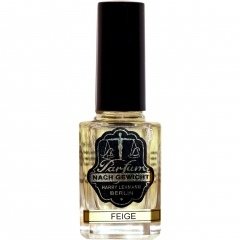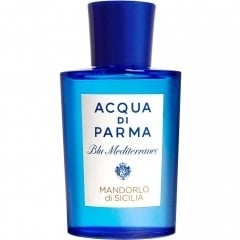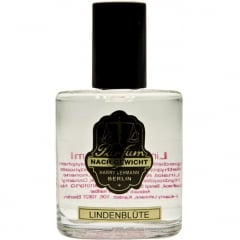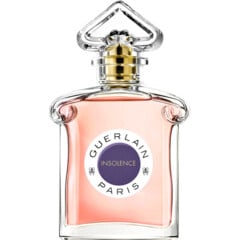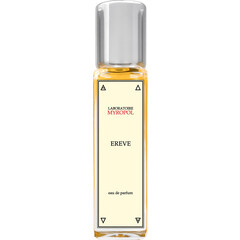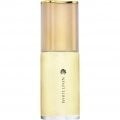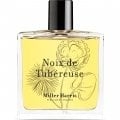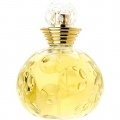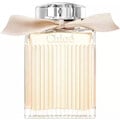
Harielle
Reviews
Filter & sort
Translated
Show original
After the rendezvous with Lord X
Billy Wilder, one of my favourite directors, would have turned 114 these days. His films have accompanied me since my earliest youth. It all started with "1,2,3" and "Some Like Hot" at my parents' house. With "Irma la douce" I associate above all the meetings with my cousin of the same age at our grandmother's in North Rhine-Westphalia. Although my cousin and I could not or could not be different, we got along very well with each other and watched Wilders "Irma la douce" at least once at each of these meetings while our grandmother was taking her nap.
The plot of the film is quickly summarized (those who know the film can skip this part):
Paris in the early 1960s. The suspended patrolman Nestor Patou falls in love with the streetwalker Irma, called Irma la Douce ("Irma the Sweet"). After beating Irma's pimp in a spectacular brawl, he takes over with his place. But Nestor cannot have a purely business relationship with Irma, jealousy of her suitors drives him crazy. Together with the help of café owner Moustache, Nestor disguises himself as "Lord X" and visits Irma from now on. For a few harmless card games she is royally rewarded each time and doesn't have to accept any more suitors. Since Nestor has to earn the money secretly at night at the Parisian wholesale market, the halles centrales, he is tired during the day and increasingly inattentive. Irma suspects an affair, seduces Lord X and decides to elope with him.
Nestor for his part is now jealous of the (non-existent) Lord X and sinks the costume into the Seine. He is watched by Irma's former pimp, who reports the alleged murder to the police. In prison Nestor finds out that Irma is pregnant by him. He manages to escape and marries Irma at the last second before the birth. Since Lord X has appeared on the sidelines against all logic, Nestor is acquitted of the accusations of murder. As usual with Wilder, the event is garnished with numerous lovingly polished supporting roles like Irma's colleagues with the speaking names "Amazons Annie" or "Kiki the Cossack", a champagne drinking dog with kidney ailments and of course the dazzling "Macs", the pimps who meet regularly at Café Chez Moustache.
What does Lehmann's fig have to do with all this?
This is also quickly explained: This fig is green like Irma's stockings (and underwear, of course), for me it conveys more of an aesthetic corresponding to the artificial flowers of clay, rather than Mediterranean lightness or even holiday feeling. This fig is ripe, it was brought to the halles by Nestor after his work and now, lying in a bowl in Irma's shabby-charming attic apartment, exudes a strong fruity and sour aroma. After the extended appointments with Lord X, Irma always has a touch of his intense aftershave when she comes home, although these meetings are platonic to the last.
This aftershave mixes in the heart note with a turbulent fruity fig note and some creamy floral nuances reminiscent of the wallpaper in front of Irma's "business address" (that's the hour hotel on Rue Casanova). The whole thing also has a slightly soapy character at times, which goes well with the charm of the comparatively innocent-romantic love of Irma and Nestor. The base heralds the most beautiful chapter of this fig for me: Woody notes underpin the still strongly resounding fruity figs and dim them increasingly, although I cannot identify which woods were used here.
Conclusion:
A grossly motoric fig with penetrating power for the brave, who can also take on a Lord X and like (head) cinema!
The plot of the film is quickly summarized (those who know the film can skip this part):
Paris in the early 1960s. The suspended patrolman Nestor Patou falls in love with the streetwalker Irma, called Irma la Douce ("Irma the Sweet"). After beating Irma's pimp in a spectacular brawl, he takes over with his place. But Nestor cannot have a purely business relationship with Irma, jealousy of her suitors drives him crazy. Together with the help of café owner Moustache, Nestor disguises himself as "Lord X" and visits Irma from now on. For a few harmless card games she is royally rewarded each time and doesn't have to accept any more suitors. Since Nestor has to earn the money secretly at night at the Parisian wholesale market, the halles centrales, he is tired during the day and increasingly inattentive. Irma suspects an affair, seduces Lord X and decides to elope with him.
Nestor for his part is now jealous of the (non-existent) Lord X and sinks the costume into the Seine. He is watched by Irma's former pimp, who reports the alleged murder to the police. In prison Nestor finds out that Irma is pregnant by him. He manages to escape and marries Irma at the last second before the birth. Since Lord X has appeared on the sidelines against all logic, Nestor is acquitted of the accusations of murder. As usual with Wilder, the event is garnished with numerous lovingly polished supporting roles like Irma's colleagues with the speaking names "Amazons Annie" or "Kiki the Cossack", a champagne drinking dog with kidney ailments and of course the dazzling "Macs", the pimps who meet regularly at Café Chez Moustache.
What does Lehmann's fig have to do with all this?
This is also quickly explained: This fig is green like Irma's stockings (and underwear, of course), for me it conveys more of an aesthetic corresponding to the artificial flowers of clay, rather than Mediterranean lightness or even holiday feeling. This fig is ripe, it was brought to the halles by Nestor after his work and now, lying in a bowl in Irma's shabby-charming attic apartment, exudes a strong fruity and sour aroma. After the extended appointments with Lord X, Irma always has a touch of his intense aftershave when she comes home, although these meetings are platonic to the last.
This aftershave mixes in the heart note with a turbulent fruity fig note and some creamy floral nuances reminiscent of the wallpaper in front of Irma's "business address" (that's the hour hotel on Rue Casanova). The whole thing also has a slightly soapy character at times, which goes well with the charm of the comparatively innocent-romantic love of Irma and Nestor. The base heralds the most beautiful chapter of this fig for me: Woody notes underpin the still strongly resounding fruity figs and dim them increasingly, although I cannot identify which woods were used here.
Conclusion:
A grossly motoric fig with penetrating power for the brave, who can also take on a Lord X and like (head) cinema!
11 Comments
Translated
Show original
No Vin Santo, please
Cantuccini are a funny pastry from northern Italy, which I was offered for the first time by my late mother-in-law. I took a hearty bite of the little crispy something, which I immediately regretted, as the thing tasted more than crispy, namely rock-hard and extremely dusty. Fortunately I have strong and firm little biters, otherwise the adventure would have catapulted me onto the couch of Dr. S., my Viennese dentist.
Able to learn as I am at times, I quickly understood that Cantuccini can either be chewed nobly or enjoyed with a café or a glass of Vin Santo. The latter is too much of a good thing even for me with a sweet nose and so I always preferred the café, preferably strong black espresso, during my later stays in Northern Italy. By the way, espresso has gradually become part of my life in this way, pure black, strong, without the fuss of milk or sugar.
The Cantuccini, on the other hand, I have somehow forgotten with the passing of this mother-in-law. And then the Corona pandemic came and the time at home became long and my baking skills are quite clear, so that one day between homeoffice, e-learning of my crown prince and after an article about italian delicacies I started to bake Cantuccini by myself.the thing was not that difficult, first the recipe for bloody beginners made of flour, almonds, sugar, eggs and vanilla pulp tested, with not only for me convincing results.
On the second and third attempts I boldly added grated lemons or orange peel with the result that the things were eaten away even faster than on the first pass.
Italy, Tuscany, Florence, oh how much I was gripped by the desire to travel and the taste for dolce vita, especially in this phase of quarantine! But apart from the fact that I would generally refrain from travelling to Italy at the moment, because Corona has raged in some parts of the country and in my opinion the all-clear cannot be given yet, the travel budget, also thanks to "Oasch-Virus Corona", is for the time being too thin for a trip of this format. A small olfactory cheaper trip I promised myself from Mandorlo di Sicilia from the Blu Mediterraneo series of Acqua di Parma, so I quickly organized a bottling. Before I go into the fragrance itself, I would like to briefly explain my expectations and what these have to do with Cantuccini. In front of my inner eye I had the enchanting Beatrice from Il Postino or the young buxom Claudia Cardinale and a powdery almond scent with an overall subtle dry sweetness and slightly citrus notes in the opening and a musky base.
This corresponds more or less to a Cantuccini in scented form and if you study the scented pyramid of Mandorlo di Sicilia on the Acqua di Parma website:
The top note: star anise, Italian bergamot, Italian orange
Heart notes: Green almonds, ylang ylang
Base note: Madagascan vanilla, Lebanese cedar wood, tolu balsam, musk*
To make a long story short: yes, I got the Cantuccini - but with sticky Vino Santo and I hadn't ordered the latter! Mandorlo di Sicilia starts off full-bodied sweet, the listed citric notes in the prelude are reduced to an equally sweet orange aroma for my nose, which reminds me remotely of those refreshment sticks I used to nibble on at my grandmother's when I was a child (does anyone here remember them? Dark, very sweet chocolate sticks filled with a peckish-sweet aqueous liquid that had orange or lemon flavour from the chemilab). In no time at all an almond chord - unfortunately also sweet - appears. The sweetness could come from the listed Ylang Ylang, I have very different scent experiences with Ylang Ylang, sometimes it is flowery - lush, sometimes rather flowery-vanilla, sometimes simply sticky for my nose.
Here I cannot identify it, suspecting the vanilla listed in the base as the actual culprit. I don't notice anything of cedar wood and musk, the whole thing is just a simple sugary vanilla melange and makes me dream of salt crackers, pickles and curry sausage.
Nevertheless, I will not give up bottling Mandorlo di Sicilia so quickly. Perhaps it will serve me well next winter and then unfold its true charm under a woollen sweater and with warm lined boots on my feet. For this reason, I will wait a little longer with my evaluation here.
Furthermore, because of my geographical potpourri, it is perhaps my own fault that my expectations were not met. Between Tuscany and Sicily there are not only kilometres but certainly worlds apart. To search for a Tuscan speciality in a fragrance declared as Sicilian was therefore perhaps doomed to failure from the very beginning.
Able to learn as I am at times, I quickly understood that Cantuccini can either be chewed nobly or enjoyed with a café or a glass of Vin Santo. The latter is too much of a good thing even for me with a sweet nose and so I always preferred the café, preferably strong black espresso, during my later stays in Northern Italy. By the way, espresso has gradually become part of my life in this way, pure black, strong, without the fuss of milk or sugar.
The Cantuccini, on the other hand, I have somehow forgotten with the passing of this mother-in-law. And then the Corona pandemic came and the time at home became long and my baking skills are quite clear, so that one day between homeoffice, e-learning of my crown prince and after an article about italian delicacies I started to bake Cantuccini by myself.the thing was not that difficult, first the recipe for bloody beginners made of flour, almonds, sugar, eggs and vanilla pulp tested, with not only for me convincing results.
On the second and third attempts I boldly added grated lemons or orange peel with the result that the things were eaten away even faster than on the first pass.
Italy, Tuscany, Florence, oh how much I was gripped by the desire to travel and the taste for dolce vita, especially in this phase of quarantine! But apart from the fact that I would generally refrain from travelling to Italy at the moment, because Corona has raged in some parts of the country and in my opinion the all-clear cannot be given yet, the travel budget, also thanks to "Oasch-Virus Corona", is for the time being too thin for a trip of this format. A small olfactory cheaper trip I promised myself from Mandorlo di Sicilia from the Blu Mediterraneo series of Acqua di Parma, so I quickly organized a bottling. Before I go into the fragrance itself, I would like to briefly explain my expectations and what these have to do with Cantuccini. In front of my inner eye I had the enchanting Beatrice from Il Postino or the young buxom Claudia Cardinale and a powdery almond scent with an overall subtle dry sweetness and slightly citrus notes in the opening and a musky base.
This corresponds more or less to a Cantuccini in scented form and if you study the scented pyramid of Mandorlo di Sicilia on the Acqua di Parma website:
The top note: star anise, Italian bergamot, Italian orange
Heart notes: Green almonds, ylang ylang
Base note: Madagascan vanilla, Lebanese cedar wood, tolu balsam, musk*
To make a long story short: yes, I got the Cantuccini - but with sticky Vino Santo and I hadn't ordered the latter! Mandorlo di Sicilia starts off full-bodied sweet, the listed citric notes in the prelude are reduced to an equally sweet orange aroma for my nose, which reminds me remotely of those refreshment sticks I used to nibble on at my grandmother's when I was a child (does anyone here remember them? Dark, very sweet chocolate sticks filled with a peckish-sweet aqueous liquid that had orange or lemon flavour from the chemilab). In no time at all an almond chord - unfortunately also sweet - appears. The sweetness could come from the listed Ylang Ylang, I have very different scent experiences with Ylang Ylang, sometimes it is flowery - lush, sometimes rather flowery-vanilla, sometimes simply sticky for my nose.
Here I cannot identify it, suspecting the vanilla listed in the base as the actual culprit. I don't notice anything of cedar wood and musk, the whole thing is just a simple sugary vanilla melange and makes me dream of salt crackers, pickles and curry sausage.
Nevertheless, I will not give up bottling Mandorlo di Sicilia so quickly. Perhaps it will serve me well next winter and then unfold its true charm under a woollen sweater and with warm lined boots on my feet. For this reason, I will wait a little longer with my evaluation here.
Furthermore, because of my geographical potpourri, it is perhaps my own fault that my expectations were not met. Between Tuscany and Sicily there are not only kilometres but certainly worlds apart. To search for a Tuscan speciality in a fragrance declared as Sicilian was therefore perhaps doomed to failure from the very beginning.
9 Comments
Translated
Show original
Give a kiss to Lydia
A distraction from real life, an escape from reality, that is what publisher Ernst Rowohlt wanted writer Kurt Tucholsky to do for his readers in a fictional correspondence. Tucholsky fulfilled the publisher's wish for "a light, summery novel, perhaps a love story" and wrote one of his greatest successes with the public: "Schloss Gripsholm. A summer story". As onlookers we travel to southern Sweden with first-person narrator Peter, called Daddy, and his girlfriend Lydia, called Princess. The carefree summer resort peppered with banter - partly on Missingchen* - is enriched by interesting visitors, namely friend Karlchen and the erotically attractive girlfriend Billie. The cheerful idyll is torn apart when the couple meets little Ada, who lives in a nearby children's home and is exposed to the reprisals of the director. Lydia and Peter take care of the child and organize that he can return to his (so far unsuspecting) mother in Switzerland.
Hardly any other fragrance embodies the relaxed idleness in "Schloss Gripsholm" for me as much as "Lindenblüte" by Harry Lehmann. The (supposed) simplicity of this fragrance paired with the aesthetics and mood of the Weimar period, which even resonates in the relaxed and summery atmosphere of Tucholsky's story, form a harmonious unity for me. The fact that both the brand Harry Lehmann and the two main characters Peter and Lydia come from Berlin (Lydia originally comes from Rostock, as we soon learn - keyword "Missingsch"), which is also the home of the legendary street "Unter den Linden", may strengthen this chain of associations for me.
How does "Linden Blossom" by Harry Lehmann smell?
Well, quite simply, after Linden Blossom - you wouldn't have guessed that now, would you? This could indeed become a very short text, as I have little to add verbally to this wonderful authentic monofloral fragrance (although the term monofloral should be used with caution).
But I will try to capture my scent impressions with Tucholsky's help:
A rich green rustling of leaves determines the start of the fragrance. I see Lydia and Peter cycling along an avenue in front of my inner eye on a still fresh summer morning, there is still dew on the meadow and Lydia has goose bumps on her bare legs.
Surrounded by the wonderful flowery, slightly sweet scent of lime blossoms, the two of them take a break in the late morning and lie in the grass. They chat and tease each other. Bees are buzzing peacefully, not far away farmers have piled up hay to dry, whose light scent mixes with that of the lime blossoms.
Lydia has taken off her cardigan and begins with "Daddy" chewing on a blade of grass, the book's omnipresent exuberant language games about names and identities, which the narrator lovingly and ironically describes as "agreement on the basic questions of existence" without ascribing a mysterious, deeper meaning to them. This corresponds to the humorous, witty basic tenor of the story. The harmony and lightness is apostrophized by the obligatory "Give a kiss to Lydia"
On the way home to Gripsholm Castle, the sun is high in the sky, the air is warm and almost a little muggy. The light summer wind blows pollen and delicate honey-sweet aromas across. The "Princess" and her "Daddy" feel pleasantly tired of sun, air - and love.
I hope that I could give you a useful impression of this wonderful lime blossom scent with this little sketch - and maybe make you want to read Tucholsky.
Of course, there was a discussion about the extent to which Kurt Tucholsky's narrative has autobiographical traits, which he denied, by the way. In any case, the dedication "For IA 47 407" referred little discreetly to the journalist Lisa Matthias (whose license plate number read accordingly) with whom he had a relationship from 1927 to 1930 and with whom he demonstrably spent holidays in Sweden. In 1929 Kurt Tucholsky emigrated to Sweden, where he lived until his suicide in 1935.
In any case, it's nice to get a little Gripsholm feeling out of the bottle when needed to "unwind" - and unlike Lydia and Kurt, this romance doesn't have to end after one summer. Their time together in Sweden is limited, although for a brief moment they even think about staying there, but they realize: "No, that's not it. If you move, the worries follow. If you're there for four weeks, you laugh about everything - even the little inconveniences. They don't concern you in the least. But if you're there forever, then you have to participate."
*"Missingsch is what comes out when a Low German wants to speak High German. He crawls up the polished stairs of German grammar and slides all nose long back into his beloved Low German. Lydia is from Rostock, and she masters this idiom to perfection."
Hardly any other fragrance embodies the relaxed idleness in "Schloss Gripsholm" for me as much as "Lindenblüte" by Harry Lehmann. The (supposed) simplicity of this fragrance paired with the aesthetics and mood of the Weimar period, which even resonates in the relaxed and summery atmosphere of Tucholsky's story, form a harmonious unity for me. The fact that both the brand Harry Lehmann and the two main characters Peter and Lydia come from Berlin (Lydia originally comes from Rostock, as we soon learn - keyword "Missingsch"), which is also the home of the legendary street "Unter den Linden", may strengthen this chain of associations for me.
How does "Linden Blossom" by Harry Lehmann smell?
Well, quite simply, after Linden Blossom - you wouldn't have guessed that now, would you? This could indeed become a very short text, as I have little to add verbally to this wonderful authentic monofloral fragrance (although the term monofloral should be used with caution).
But I will try to capture my scent impressions with Tucholsky's help:
A rich green rustling of leaves determines the start of the fragrance. I see Lydia and Peter cycling along an avenue in front of my inner eye on a still fresh summer morning, there is still dew on the meadow and Lydia has goose bumps on her bare legs.
Surrounded by the wonderful flowery, slightly sweet scent of lime blossoms, the two of them take a break in the late morning and lie in the grass. They chat and tease each other. Bees are buzzing peacefully, not far away farmers have piled up hay to dry, whose light scent mixes with that of the lime blossoms.
Lydia has taken off her cardigan and begins with "Daddy" chewing on a blade of grass, the book's omnipresent exuberant language games about names and identities, which the narrator lovingly and ironically describes as "agreement on the basic questions of existence" without ascribing a mysterious, deeper meaning to them. This corresponds to the humorous, witty basic tenor of the story. The harmony and lightness is apostrophized by the obligatory "Give a kiss to Lydia"
On the way home to Gripsholm Castle, the sun is high in the sky, the air is warm and almost a little muggy. The light summer wind blows pollen and delicate honey-sweet aromas across. The "Princess" and her "Daddy" feel pleasantly tired of sun, air - and love.
I hope that I could give you a useful impression of this wonderful lime blossom scent with this little sketch - and maybe make you want to read Tucholsky.
Of course, there was a discussion about the extent to which Kurt Tucholsky's narrative has autobiographical traits, which he denied, by the way. In any case, the dedication "For IA 47 407" referred little discreetly to the journalist Lisa Matthias (whose license plate number read accordingly) with whom he had a relationship from 1927 to 1930 and with whom he demonstrably spent holidays in Sweden. In 1929 Kurt Tucholsky emigrated to Sweden, where he lived until his suicide in 1935.
In any case, it's nice to get a little Gripsholm feeling out of the bottle when needed to "unwind" - and unlike Lydia and Kurt, this romance doesn't have to end after one summer. Their time together in Sweden is limited, although for a brief moment they even think about staying there, but they realize: "No, that's not it. If you move, the worries follow. If you're there for four weeks, you laugh about everything - even the little inconveniences. They don't concern you in the least. But if you're there forever, then you have to participate."
*"Missingsch is what comes out when a Low German wants to speak High German. He crawls up the polished stairs of German grammar and slides all nose long back into his beloved Low German. Lydia is from Rostock, and she masters this idiom to perfection."
15 Comments
Translated
Show original
Afterbabyglow with genie in the bottle
June (or was it July?) 2006 Insolence was presented in Vienna in front of invited guests in the Museumsquartier in a wonderful setting - and I was allowed to be there! Very pregnant - and due to the heat at that time - and then breastfeeding, I didn't wear perfume for a while. My Insolence bottle kept laughing at me temptingly and mischievously from the shelf at home. One day in the fall of '06. In the beloved miss sixty jeans (fits again, yeah!), in addition the beloved green hooded coat and our little wonder in the bugaboo. Just before leaving the house, a touch of insolence on the wrists... Certainly an unusual combination of Insolence and Afterbabyglow. With the proud daddy off to the Werkzeug H in Vienna 15th The network eop has invited and together with other visitors we will visit the exhibits - also our baby will be "visited" and admired. Interesting discussions - who is currently doing what, when, with whom and where in Vienna/Austria/Germany/the rest of the world. Who came, who went, who, how, what.
My attention is always drawn to the baby in the car, is everything okay? Time to feed? Is it too loud in here? A mode that is automated over the years (as probably with all parents of small children). Always with a powdery touch of violets and red fruits. Discreet and homely it blows around
me. That Insolence, which has been characterized as "Godzilla Floral" and as "the most deliciously vulgar perfume on the market today" (Luca Turin), can trigger such feelings of well-being seems impossible.
Insolence is in fact a powerful fragrance that requires homeopathic dosage. Unfortunately, it often happened to me later that I did not consider this rule and therefore spoiled the pleasure of Insolence myself. Once I had not only applied a sprayer to my décolleté in the morning and already on my way to work I got a strong headache from the powder cloud that surrounded me Afterwards I gave my bottle away because I automatically associated Insolence with headaches.
By the way, my memory of Insolence refers to the first eau de toilette that was launched, which is very different from the eau de parfum that was released later. The Eau de Toilette starts with a very challenging fruity accented hairspray note that you can hardly escape. She always reminded me of a kind of cheeky, annoying (insolent!) but also fascinating genie in a bottle, who is buzzing around you with a raspberry-coloured cloud (yes, I smell raspberry, too). After about 30 minutes the genie in the bottle disappears and releases the nose for the orange blossom, rose and powdery violet (the latter I perceive most strongly) that now follows. Round and beautiful it becomes then in the base, the flowery chords merge with sandalwood, tonka bean and other notes of the traditional guerlinade. This reminds me distantly of the beautiful L`Heure Bleue - whereas Insolence is far more "riotous" and capricious from beginning to end.
For perfume fans and those who like to experiment, Insolence is a "must have" test, whereby one should not disregard the enormous intensity and bring time! Insolence is a perfume with high recognition value. For opera and restaurant visits, please use only minimal doses. After my experience with Chatelaine, which I apply exclusively in drop form, I can imagine to try it again with Insolence on occasion, although my baby is already 13 today and I am not really glowe.
My attention is always drawn to the baby in the car, is everything okay? Time to feed? Is it too loud in here? A mode that is automated over the years (as probably with all parents of small children). Always with a powdery touch of violets and red fruits. Discreet and homely it blows around
me. That Insolence, which has been characterized as "Godzilla Floral" and as "the most deliciously vulgar perfume on the market today" (Luca Turin), can trigger such feelings of well-being seems impossible.
Insolence is in fact a powerful fragrance that requires homeopathic dosage. Unfortunately, it often happened to me later that I did not consider this rule and therefore spoiled the pleasure of Insolence myself. Once I had not only applied a sprayer to my décolleté in the morning and already on my way to work I got a strong headache from the powder cloud that surrounded me Afterwards I gave my bottle away because I automatically associated Insolence with headaches.
By the way, my memory of Insolence refers to the first eau de toilette that was launched, which is very different from the eau de parfum that was released later. The Eau de Toilette starts with a very challenging fruity accented hairspray note that you can hardly escape. She always reminded me of a kind of cheeky, annoying (insolent!) but also fascinating genie in a bottle, who is buzzing around you with a raspberry-coloured cloud (yes, I smell raspberry, too). After about 30 minutes the genie in the bottle disappears and releases the nose for the orange blossom, rose and powdery violet (the latter I perceive most strongly) that now follows. Round and beautiful it becomes then in the base, the flowery chords merge with sandalwood, tonka bean and other notes of the traditional guerlinade. This reminds me distantly of the beautiful L`Heure Bleue - whereas Insolence is far more "riotous" and capricious from beginning to end.
For perfume fans and those who like to experiment, Insolence is a "must have" test, whereby one should not disregard the enormous intensity and bring time! Insolence is a perfume with high recognition value. For opera and restaurant visits, please use only minimal doses. After my experience with Chatelaine, which I apply exclusively in drop form, I can imagine to try it again with Insolence on occasion, although my baby is already 13 today and I am not really glowe.
6 Comments
Translated
Show original
Boutonniere
Especially in this year's (premature) transitional season - coupled with the anniversary of my grandmother's death - I especially like to wear the melancholically beautiful Ereve from the Russian fragrance brand Myropol. Ereve means evening and in memory of my grandmother, who was a ballet dancer as a young woman, Ereve brings to my mind the bittersweet "evening blessing" from Engelbert Humperdinck's opera Hansel and Gretel.
The text of the "Evening Blessing" was written - like the entire libretto - by Humperdinck's sister Adelheid Wette and is sung in two voices. "In the evening I want to go to sleep", so the beginning and Ereve already announces in the fruity and spicy prelude with a very lightly citric touch the warmth and security, but also the melancholy of another past day, which like every past day - as I picked up recently in a very intensive conversation - always brings us a little bit closer to death.
If this thought is too morbid - don't worry, help is on the way! The brother and sister continue to sing of fourteen angels whom they surround in their sleep "...... two at my heads, two at my feet.... And while you are still listening and imagining in your mind's eye how magical light beings surround the two children lost in the forest, Ereve, with its full-bodied heart note of various herbs (mint?), spices (I can clearly identify cinnamon and ginger), which are clearly found in the coniferous forest with rosy nuances, gives the impression that this clearing is quite homely, because it is warm and cosy.
"...two to cover me, two to wake me up...", the warm, woodsy-balsamic, yes, slightly syrupy character of Ereve, deepens in the base note and envelops me like the two confident children from Grimm's fairy tales. Labdanum and Opoponax combined with Peru balsam make Ereve clearly wearable for both sexes - after all, Hansel is a trouser role. Styrax and myrrh harmonize well with the last lines of the evening's blessing: "two, that lead me to heaven's parade" and remind us that Humperdinck's opera is often performed during the Christmas season.
Ereve very aptly depicts a late romantic fairy-tale scenario, which is quite acceptable for both sexes
The text of the "Evening Blessing" was written - like the entire libretto - by Humperdinck's sister Adelheid Wette and is sung in two voices. "In the evening I want to go to sleep", so the beginning and Ereve already announces in the fruity and spicy prelude with a very lightly citric touch the warmth and security, but also the melancholy of another past day, which like every past day - as I picked up recently in a very intensive conversation - always brings us a little bit closer to death.
If this thought is too morbid - don't worry, help is on the way! The brother and sister continue to sing of fourteen angels whom they surround in their sleep "...... two at my heads, two at my feet.... And while you are still listening and imagining in your mind's eye how magical light beings surround the two children lost in the forest, Ereve, with its full-bodied heart note of various herbs (mint?), spices (I can clearly identify cinnamon and ginger), which are clearly found in the coniferous forest with rosy nuances, gives the impression that this clearing is quite homely, because it is warm and cosy.
"...two to cover me, two to wake me up...", the warm, woodsy-balsamic, yes, slightly syrupy character of Ereve, deepens in the base note and envelops me like the two confident children from Grimm's fairy tales. Labdanum and Opoponax combined with Peru balsam make Ereve clearly wearable for both sexes - after all, Hansel is a trouser role. Styrax and myrrh harmonize well with the last lines of the evening's blessing: "two, that lead me to heaven's parade" and remind us that Humperdinck's opera is often performed during the Christmas season.
Ereve very aptly depicts a late romantic fairy-tale scenario, which is quite acceptable for both sexes
3 Comments

 Harielle
Harielle